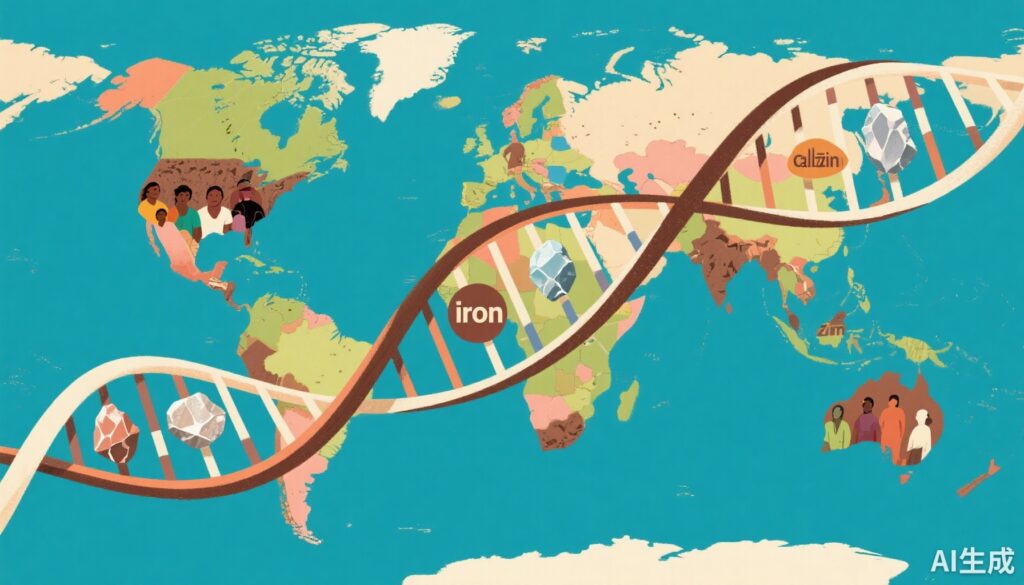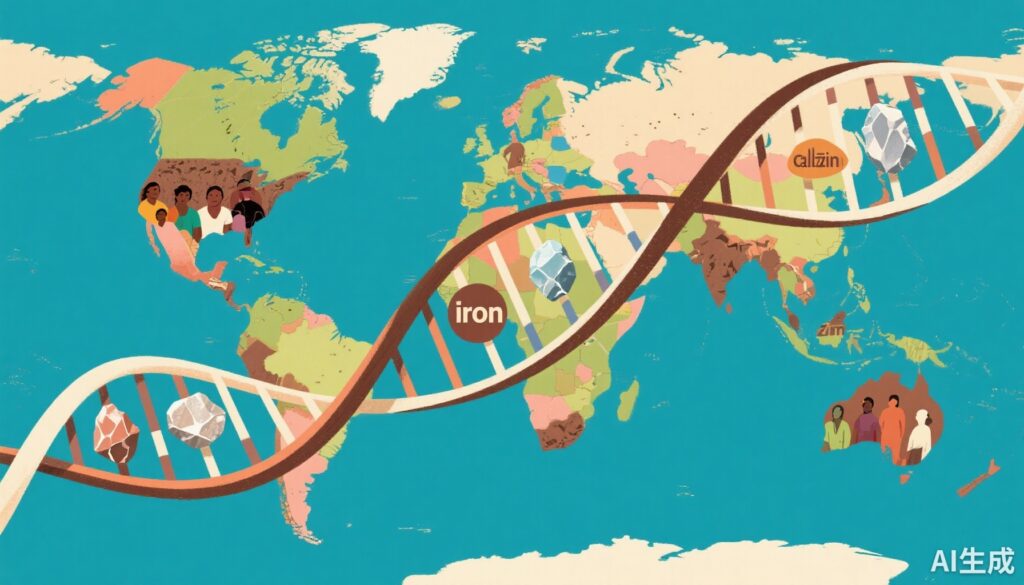Introduction
Micronutrients are minerals required by the human body in minute amounts, often measured in micrograms or milligrams. Though small in quantity, their significance cannot be overstated — these elements underpin key physiological functions such as metabolism, immune response, development, and cellular repair. Beyond their critical roles in health, emerging research unveils that micronutrients have also played a vital role in shaping our genetic makeup throughout human evolution.
On September 10, 2025, a groundbreaking study published in The American Journal of Human Genetics (Cell Press) illuminated how ancient human populations across the globe genetically adapted to regional variations in micronutrient availability — particularly iron, calcium, zinc, selenium, iodine, magnesium, and others. This study led by Jasmin Rees, a postdoctoral researcher at the University of Pennsylvania and former University College London doctoral candidate, represents the first comprehensive global analysis investigating how multiple micronutrients have driven human evolutionary adaptations.
The Crucial Role of Micronutrients in Human Health and Evolution
Micronutrients, including minerals like iron, calcium, zinc, and selenium, are essential cofactors in numerous biochemical pathways. Deficiencies or excesses can severely affect growth, immune competence, cognitive development, and overall survival. The study’s authors emphasize that the content of these minerals in foods depends substantially on the mineral composition of local soils. In many regions of the world prior to the advent of modern dietary supplements and fortified foods, human populations faced chronic shortages or intermittent excesses of these key nutrients owing to their geographic environment.
For example, in parts of the African rainforest, iodine deficiency — caused by iodine-poor soils — led to endemic goiter, a condition marked by thyroid gland enlargement. Such environmental pressures could exert selective forces on the human genome if persistent and severe enough.
Investigating the Genetic Footprints of Micronutrient Adaptations
Jasmin Rees and colleagues aimed to decode this evolutionary influence by focusing on genes connected to the absorption, transport, and utilization of 13 essential minerals. Their study analyzed genetic sequences from over 900 individuals representing 40 diverse global populations, tracing the adaptive changes over time.
The researchers examined 276 genes involved in micronutrient biology, including those regulating iron metabolism, calcium channels, zinc transporters, and selenium enzymes. This scope allowed a panoramic view of how diverse mineral environments influenced human genomes.
“To our knowledge, this is the first systematic global-scale study exploring how multiple micronutrients have driven human adaptation,” Rees states.
Key Findings: Evidence of Population-Specific Genetic Adaptations
The analysis uncovered that every one of the 13 studied micronutrients left genetic adaptation signatures in at least one population. These findings affirm that local mineral availability exerted evolutionary pressure historically, molding genetic variations that helped populations survive nutrient limitations or toxicities.
For instance, in the iodine-deficient soils of Central America, notably among the Maya, researchers identified significant adaptations in genes regulating iodine metabolism. These variants likely evolved to moderate the adverse effects of dietary iodine scarcity.
Conversely, in some regions of South Asia where soil magnesium levels are exceptionally high, two genes related to magnesium uptake and regulation displayed selective variations. Researchers propose these genetic changes might protect inhabitants from magnesium toxicity.
Such population-specific genetic signatures highlight complex co-evolutionary dynamics where environment, diet, and human biology intertwine.
Broader Implications: Micronutrients, Environment, and Public Health
Understanding how micronutrient availability influenced genetic adaptation offers valuable insights for modern health challenges. Climate change, deforestation, and intensive agriculture increasingly alter soil composition and nutrient cycles worldwide, risking novel micronutrient imbalances.
Rees highlights that identifying populations historically shaped by particular micronutrient pressures can help pinpoint groups vulnerable to emerging nutritional deficiencies or toxicities. For example, communities evolved under chronic iodine scarcity may be more susceptible to thyroid disorders if environmental iodine further diminishes.
Connecting Evolutionary Genetics to Public Health Strategy
The study stands as a preliminary but important step toward leveraging evolutionary genetics for public health planning. By integrating genetic data with environmental and nutritional information, health policymakers can better predict which populations face increased risks due to shifting mineral access.
This approach supports tailored nutritional interventions and resource allocation to mitigate micronutrient-related diseases and health disparities.
Expert Insights and Future Directions
Jasmin Rees envisions that ongoing research into the genetic basis of micronutrient adaptations will yield further insights into the interplay between diet, environment, and human biology.
“Our hope is that these findings will provide a scientific basis for future public health decisions, especially as environmental changes threaten to alter the micronutrient landscape drastically,” she notes.
Continued interdisciplinary investigations blending genomics, nutrition science, anthropology, and environmental studies are crucial to unravel how ancient adaptation informs current health vulnerabilities and resilience.
Case Scenario: Navigating Nutrition in Diverse Genetic Backgrounds
Consider Emily, a 35-year-old nutritionist working with Native American communities in the Southwestern United States. Being aware that the ancestors of these populations may have evolved genetic adaptations to the regional nutrient environment, Emily incorporates this knowledge into dietary assessments.
For example, she notes that iodine deficiency historically influenced populations in surrounding areas. Thus, she emphasizes monitoring thyroid function and sufficient iodine intake, especially as environmental changes affect soil mineral content.
Such individualized nutritional counseling informed by genetic and environmental history exemplifies the practical potential of this research.
Conclusion
This landmark study reveals that micronutrients have been powerful evolutionary forces shaping human DNA across global populations. Genetic adaptations linked to regional mineral availabilities underscore the deep interconnection between environment, diet, and genetics.
As modern agriculture and climate pressures transform soil nutrient profiles, understanding these evolutionary legacies is crucial for predicting nutritional vulnerabilities and guiding effective public health strategies.
Future research expanding this global genetic and nutritional framework promises to enhance personalized nutrition, disease prevention, and health equity worldwide.
References
Rees J, Castellano S, Andrés AM. Global impact of micronutrients in modern human evolution. Am J Hum Genet. 2025 Aug 29:S0002-9297(25)00315-5. doi: 10.1016/j.ajhg.2025.08.005. Epub ahead of print. PMID: 40934922.



